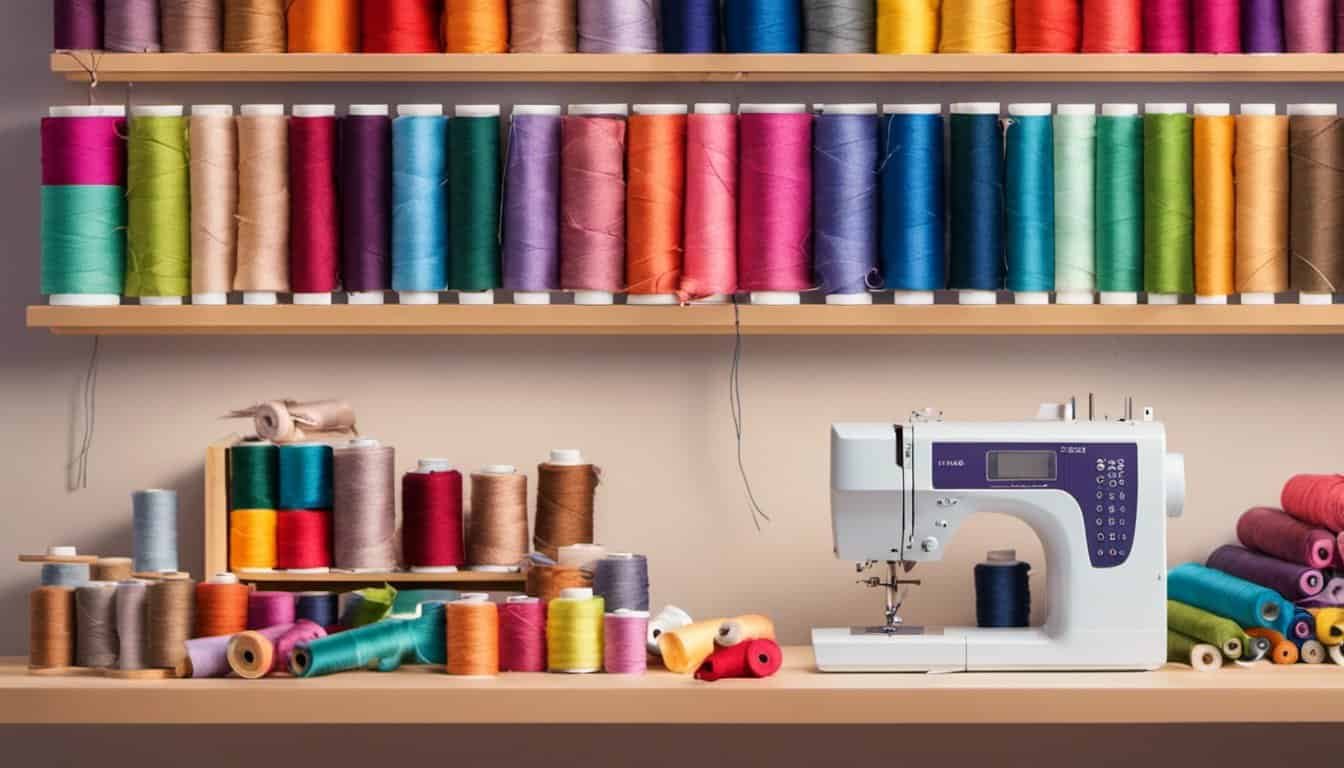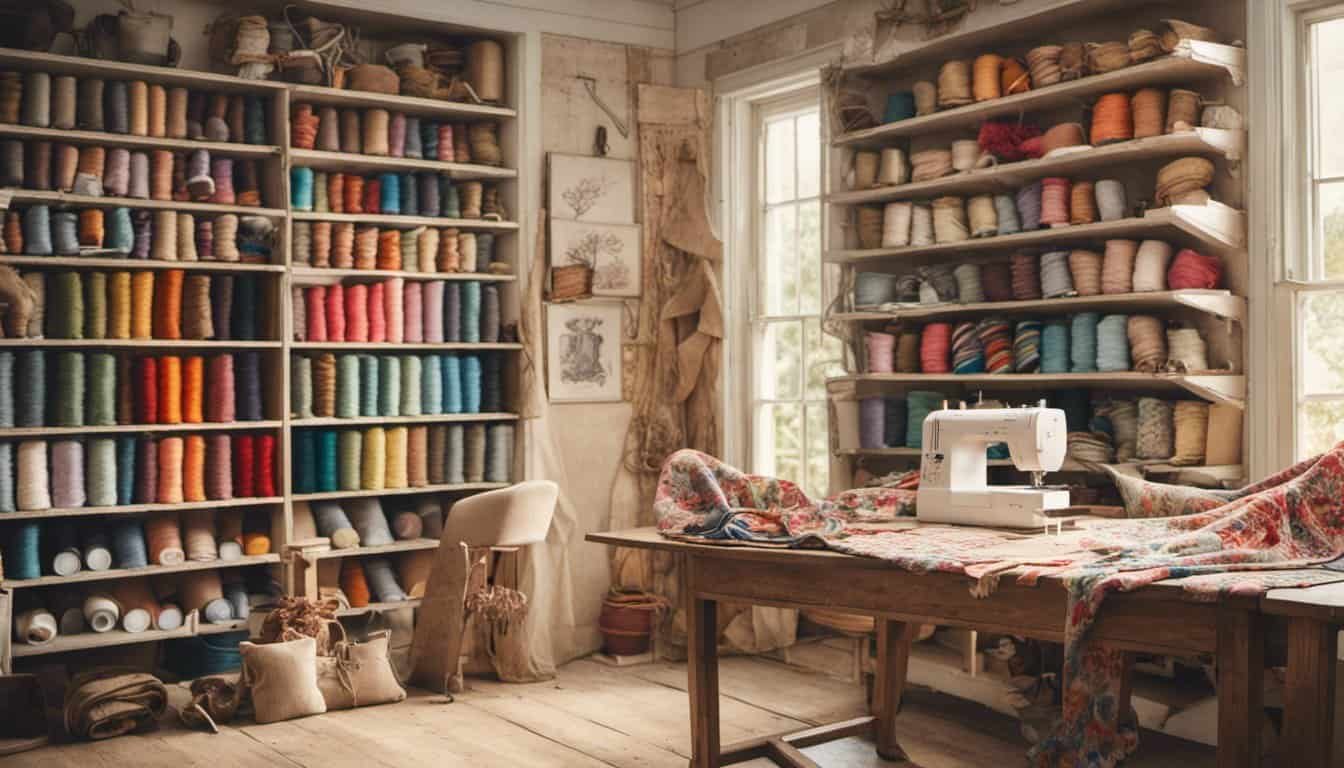Sewing with linen lets you create garments that breathe effortlessly, perfect for warm days and stylish comfort. Whether you’re a seasoned sewer or just starting out, working with linen can feel rewarding and fun.
You’ll love the natural texture and durability linen offers. It’s not just about comfort; it’s about crafting pieces that last and look great. From simple shirts to flowing dresses, mastering linen sewing opens up a world of creative possibilities.
Ready to dive in? With a few tips and the right techniques, you’ll be sewing breathable, beautiful linen garments in no time. Let’s explore how you can make the most of this versatile fabric and enhance your wardrobe with handmade flair.
Benefits Of Linen For Breathable Garments
Superior Breathability: Linen’s natural fibers promote excellent air circulation, keeping you cool during warm weather. This breathability makes linen garments ideal for shirts, dresses, and trousers.
Moisture-Wicking Properties: Linen can absorb up to 20% of its weight in moisture without feeling damp. This feature ensures garments remain dry and comfortable, even in humid conditions.
Durability and Longevity: Linen fibers are twice as strong as cotton, resulting in long-lasting garments that withstand regular wear and washing. Investing in linen pieces means enjoying stylish attire for years.
Hypoallergenic Qualities: Linen is naturally hypoallergenic, reducing the risk of skin irritation. It’s suitable for individuals with sensitive skin or allergies, enhancing comfort in everyday wear.
Eco-Friendly Production: Linen requires less water and fewer pesticides compared to other fabrics. Choosing linen supports sustainable fashion practices and reduces environmental impact.
Lightweight Texture: The lightweight nature of linen contributes to its breathability, allowing garments to drape elegantly without adding bulk. This quality is perfect for creating flowy dresses and relaxed-fit shirts.
Temperature Regulation: Linen helps regulate body temperature by keeping you cool in the summer and providing insulation in cooler weather. This adaptability makes linen a versatile choice for various climates.
Low Maintenance: Linen garments become softer and more comfortable with each wash. Their resistance to pilling and tearing ensures they maintain their appearance over time.
Linen vs. Other Fabrics
| Feature | Linen | Cotton | Polyester |
|---|---|---|---|
| Breathability | Excellent | Good | Poor |
| Moisture Absorption | 20% of weight | 8% of weight | 0% |
| Durability | High | Moderate | Low |
| Eco-Friendliness | High | Moderate | Low |
| Hypoallergenic | Yes | Yes | No |
| Maintenance | Easy | Easy | Easy |
Choosing linen for your breathable garments ensures comfort, durability, and sustainability, making it an excellent addition to your wardrobe.
Selecting The Right Linen Fabric
Choosing the appropriate linen fabric ensures your garments are both comfortable and durable. Consider the types and weights of linen to match your sewing project’s needs.
Types Of Linen
Different types of linen offer varying textures and finishes. Here are common varieties:

- Unbleached Linen: Retains natural fibers, offering a rustic appearance and superior breathability.
- Bleached Linen: Features a brighter color, providing a cleaner look while maintaining durability.
- Printed Linen: Incorporates patterns or designs, adding visual interest to your garments.
- Organic Linen: Grown without pesticides, ideal for eco-friendly and hypoallergenic clothing.
- Hessian Linen: Thicker and more textured, suitable for structured garments like jackets or trousers.
Choosing The Right Weight
Linen weight affects the garment’s drape and suitability for different climates. Select the weight based on your project’s requirements:
| Weight Category | GSM Range | Ideal For |
|---|---|---|
| Lightweight | 120-180 | Summer shirts, blouses, dresses |
| Medium Weight | 180-250 | Trousers, skirts, jackets |
| Heavyweight | 250+ | Outerwear, structured garments |
- Lightweight Linen: Perfect for airy, breathable garments worn in warm weather.
- Medium Weight Linen: Offers a balance between breathability and structure, suitable for versatile clothing.
- Heavyweight Linen: Provides durability and form, ideal for garments requiring more structure and warmth.
Select the appropriate linen type and weight to create comfortable, stylish, and long-lasting breathable garments.
Tools And Materials Needed
To sew breathable linen garments, gather the following tools and materials:
- Linen Fabric
Choose the appropriate type and weight based on your project, such as lightweight for shirts or medium weight for dresses.
- Sewing Machine
Ensure it has a straight stitch and a zigzag option for durable seams.
- Needles
« 10 Secrets on How to Share Your Sewing Projects with the Community Like a Pro
Troubleshooting Bobbin Tension Issues? 7 Tips to Achieve Perfect Stitches »
Use size 80/12 or 90/14 universal needles suitable for woven fabrics like linen.
- Thread
Select high-quality cotton or polyester thread for strength and durability.
- Cutting Tools
Utilize sharp fabric scissors or a rotary cutter for precise cutting.
- Measuring Tools
Keep a flexible measuring tape and clear rulers on hand for accurate measurements.
- Pins and Clips
Use fine pins or sewing clips to hold fabric pieces together during assembly.

- Iron and Ironing Board
Press seams and hems with a hot iron to achieve a professional finish.
- Patterns or Templates
Select patterns designed for linen garments to guide your cutting and sewing process.
- Seam Ripper
Have a seam ripper available for correcting mistakes or adjusting seams.
Having these tools and materials organized before you begin will streamline your sewing process and help create high-quality, breathable linen garments.
Preparing Your Linen Fabric
Properly preparing your linen fabric ensures optimal results for your breathable garments.

Pre-Washing
Begin by pre-washing your linen to remove any sizing and prevent future shrinkage. Use cold water (approximately 60°F) and a mild, colorfast detergent. Select the gentle cycle on your washing machine and wash the fabric separately to avoid color transfer.
Ironing Techniques
Iron your linen fabric while it’s slightly damp for the best results. Set your iron to 400°F on the cotton setting. Place a pressing cloth between the iron and fabric to prevent shine and potential scorching. Press each area firmly for 15 seconds, ensuring wrinkles are fully removed for accurate garment construction.
Sewing Techniques For Linen
Mastering specific sewing techniques enhances your linen garment’s quality and longevity. Implement these methods to achieve professional results.
Choosing The Right Needle
Selecting the appropriate needle ensures clean stitches and prevents fabric damage. Use a size 80/12 or 90/14 universal needle for most linen projects. For heavier linen weights, opt for a size 100/16 needle to handle thicker fabric layers. Consider using ballpoint needles for knitted linen to avoid snags and runs, ensuring smooth sewing through the fabric’s natural fibers.
Seam Techniques
Employing the right seam techniques strengthens your linen garments and maintains their breathability. French seams provide a clean, enclosed finish, ideal for lightweight linen pieces like blouses and dresses. Double-stitched seams enhance durability for items subjected to frequent wear, such as shirts and trousers. Flat-felled seams offer a sturdy, professional look suitable for denim or heavyweight linen garments. Additionally, serged seams prevent fraying and ensure longevity, especially for edges exposed to stress. Use a zigzag stitch or overlock machine to secure seams, maintaining the fabric’s integrity and comfort.

Finishing Touches
- Pressing: Iron the garment thoroughly to smooth seams and enhance the fabric’s drape.
- Trimming: Remove all excess threads to prevent fraying and maintain a clean appearance.
- Closures: Securely attach buttons, zippers, or other closures, ensuring they function properly.
- Quality Inspection: Examine the garment for any inconsistencies, loose threads, or unfinished edges.
- Final Press: Perform a last ironing pass to set the fabric and maintain the garment’s shape.
Conclusion
Sewing with linen opens up a world of comfortable and stylish possibilities for your wardrobe. You’ll enjoy the natural breathability and durability that make each piece a lasting favorite. Embrace the process and create garments that not only look great but feel amazing in any weather. Happy sewing and enjoy your beautiful handmade linen outfits!

















